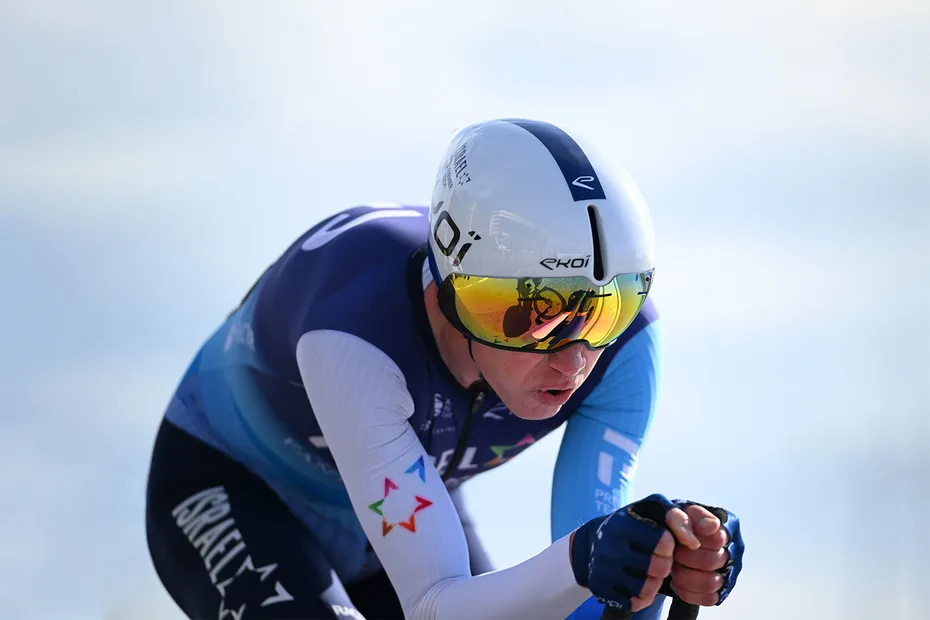A growing number of Tour de France cyclists now collaborate with breathing coaches—and for good reason. We take between 17,000 and 29,000 breaths daily, with oxygen fueling every workout. Yet, because breathing feels so automatic, we often overlook proper technique, tapping into only a fraction of our lung capacity.
“Learning to harness one of your body’s most powerful tools can make a tremendous difference in your cycling performance,” says breathing coach Thomas Hague.
“Better breathing means pushing harder, lasting longer, and feeling less fatigue,” says the expert. Dive in to explore essential breathing techniques for cycling and discover how to increase your oxygen intake effectively.
Table of Contents
1. Practise long, slow, deep breaths
Begin refining your breathing technique by practicing slow, deep inhalations through your nose.
“Focus on breathing deeply into your belly, where the diaphragm—the primary muscle for breathing—is located. This helps draw the maximum oxygen into your lungs,” explains Hague.
“Nasal breathing engages the diaphragm, pulling air deeper into the lungs, reaching areas rich in blood vessels and alveoli—the tiny air sacs that transfer oxygen into your bloodstream.”
2. Build better breathing habits
Your daily breathing habits directly impact how you breathe on the bike, so it’s essential to build good practices.
“Pay attention to your breathing while driving or walking the dog,” Hague advises. “Keep an upright, neutral posture, and try to slow your breathing by focusing on light, deep breaths. Avoid mouth breathing unless you’re in intense training zones—it should be an exception, not the rule.”
3. Practise bike-specific breathing
Once you’ve improved your everyday breathing, shift your focus to breathing more efficiently on the bike.
“Leaning forward on a bike can limit the diaphragm—the main muscle used for breathing,” Hague explains.
“Try some lower-intensity rides focused solely on nose breathing.” This approach helps optimize oxygen flow in the specific posture used while cycling.
4. Breathe like a child
Yoga’s Child’s Pose can also help improve breathing specifically for cycling.
“When we’re bent over the bike, we tend to breathe toward the upper back and shoulders, but ideally, we should be drawing air down into the diaphragm,” explains Hague.
To practice this, kneel with your hips resting on your heels, stretch your arms forward, and place your forehead on the floor. “Try breathing in this position,” Hague suggests. “Then, place a small weight, like a book, on your back to feel it rise with each inhale and fall with each exhale.”
5. Strengthen your diaphragm
Strengthening your diaphragm is possible with mobility exercises, including core exercises and posture-focused movements.
“These exercises not only boost lung capacity but also enhance the flexibility of the intercostal muscles around the diaphragm,” says Hague.
6. Boost your CO₂ tolerance
Improving your tolerance to carbon dioxide (CO₂) can make your breathing much more efficient.
“With a strong CO₂ tolerance, oxygen is delivered more effectively to your cells, boosting your energy so you can sustain intense efforts longer,” explains Hague.
To measure your CO₂ tolerance, find your BOLT score—how long you can hold your breath after an exhale. “Simply exhale and hold your breath until you feel a clear urge to breathe again,” says Hague. “The number of seconds is your BOLT score. Aim to build it above 25 seconds, ideally reaching 40 or more. Practice by holding your breath while walking: inhale, exhale, then hold for 10-15 paces. Work up to 30-100 paces over time.”
7. Beat race-day nerves
This technique can also help ease pre-race nerves. “When people experience performance anxiety, they tend to breathe rapidly and open their mouths,” explains Hague.
“To counter this, slow down your breathing and engage the ‘rest and digest’ state with gentle breath holds. Exhale and hold your breath for 10-15 paces while walking to help calm your breathing.”
8. Find your flow
When cycling on flat terrain, aim to reach your ideal breathing “flow state,” where you feel most in tune with your performance.
“Discover the optimal rhythm of your pedal strokes and sync that with your breathing,” suggests Hague.
“For instance, if you’re inhaling over six pedal revolutions and exhaling over six, focus on maintaining that steady, rhythmic breathing as you ride.”
9. Speed up your recovery
Controlling your breathing can significantly improve your recovery after training sessions. “Our breathing directly influences our heart rate through a process known as respiratory sinus arrhythmia,” explains Hague.
“When we inhale, our heart rate increases, and when we exhale, it decreases, helping us transition into the ‘rest and digest’ state.”
By slowing your breathing and lengthening your exhales, you can effectively lower your heart rate and achieve an optimal recovery state.
“The best approach is to focus on gentle, slow, and deep breaths while extending your exhales. This will help calm your heart rate and enhance recovery. Aim to practice this for at least 10 minutes after each workout.”
10. Bounce back in races
“When you find yourself catching your breath after climbing a hill, it’s due to the increased carbon dioxide (CO₂) in your lungs and bloodstream, which triggers the urge to breathe,” explains Hague.
To recover, take a deep breath in through your nose, then exhale powerfully until you feel your obliques contract. Repeat this process two to three times, and you’ll quickly notice your breathing returning to a calm and steady rhythm.
- Mastering the Art of Solo Cycling: 10 Essential Tips for Success - February 28, 2024
- Core Training for Cyclists : Transform Your Ride - February 27, 2024
- 10 Ways to Enhance Your Breathing for Better Cycling Performance - February 26, 2024

